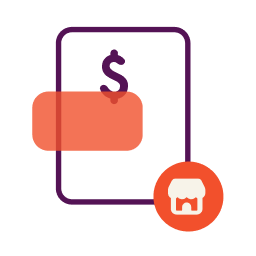Small business owners are crunched for time, and many work an increasing number of hours each week to get all of the admin, personnel, financial, and operations duties done. Where will they squeeze in a few hours for running to the bank for a business loan?
Thanks to technology, an in-person meeting with a loan officer is not always needed. These options are available 24/7, and most can provide an approval response within minutes:
1. Your Bank
Yes, I know we just mentioned your brick-and-mortar bank location as a bad choice for business owners who need to apply after hours. That doesn’t mean that the same company who already hosts your business checking or credit card line won’t offer online loan options for existing customers. In fact, most of the updated tech at major banking institutions now allow you to apply via your mobile device! Since your existing bank already has much of your qualifying info (income, credit history, personal data), it usually takes nothing more than logging into your online account, answering a few verification questions, and clicking of a button to put in your application.
Pro tip: Your business bank account is a good place to start for additional funding, since they often offer exclusive deals to existing customers to get them to grow your business. Be on the lookout for promotional financing offers via email, postal mail, and text messages, then take advantage of these offers when it’s convenient for you.
2.Your Payment Processor
Did you know that PayPal now offers business funding? Available to select sellers through their dashboards, the Working Capital program grants funds to sellers almost immediately and requires repayment through a portion of each sale processed through PayPal. Rates and fees vary, so be sure you only take out what you need. This is an easy option for those who might now want to open a new line of credit through a new bank or lender, and it’s usually available for those with less-than-stellar credit scores or no significant business credit history (you can check your business credit score for free with Nav.)
PayPal is currently the most notable processor offering a program like this, but Stripe is testing a similar service, and other banks and credit card processing companies likely have loan products you can inquire about. Since they have the data on your sales volume, you can usually apply quicker and with less documentation than a typical loan.
Pro tip: PayPal issues a credit line based on past sales. If you have been in a slump recently, you might want to wait to apply after your next big sales bump (such as Black Friday holiday season.)
3. P2P Lenders
The term “peer to peer” is exactly what it seems. If you’re looking to apply for a loan completely online, you might want to consider any of the many lending groups available that specifically offer consumer-funded loans to any type of small business or sole proprietorship. Loan amounts vary from $2,000 to $500,00, and while many of the companies require at least two years of sales records, some (like Funding Circle) have low sales revenue requirements.
Pro Tip: Be sure you know your credit score (business and personal) before you apply, and know which one will need to be provided on your application. Since consumer-targeted P2P loans can be used for business purposes, you may find these work well for a small loan. For more significant funding sources, however, look to a P2P marketplace that targets businesses specifically.
4. Invoice Financing
New to the business lending game is what is known as “instant invoice payments” or “invoice financing” services. These rely on the outstanding invoices in your invoice software to determine the sales made by your business (but not yet collected) to figure out if you’re a good credit risk and what loan amount would be appropriate for your business. Some of these loans are offered by bookkeeping software services directly; others will require you to search them out and provide your invoicing documentation to qualify.
Pro Tip: Invoice “financing” is different from invoice “factoring” – although they are often marketed much the same way. In “financing,” you use accounts outstanding as a sort of collateral on your loan. With “factoring,” however, you are getting an advance while turning invoices over to the lender to collect on for you. They contact your customers and handle all customer communications. When the invoices are collected on, you get the remaining balance – minus the lender’s fees.
5. Your Vendors
Do you do a lot of business with one major company or brand? If the majority of your funding needs are in building materials, food supplies, or technology, you may want to consider the business version of a retail credit account. Business credit accounts with one company are usually easier to get, especially if you’ve demonstrated a history of loyalty to their business. To get started, you usually only have to go to the website of the business you frequent and check their site for “credit cards.” These are usually split into two categories: one for consumers and one for businesses. Application for the business accounts can happen anytime, and approval may take place in minutes.
Pro Tip: Since this is essentially a credit card account, use care when opening a vendor account. The rates are usually higher, although it may be worth it if you can pay back charges within 30 days. Vendor or retailer accounts can offer bigger perks, however. It’s not uncommon to see up to 11% back in the form of cash or store credit, turning this business “loan” into something they pay for – not you.
These are just five of the many funding options available to small businesses today. If you’re looking for a more traditional small business loan or even angel investors, most of those are now done completely online – meaning they can be applied for on your own time. Whichever loan or credit service you start with, remember that almost all of these will result in a “hard” pull on your credit report. Don’t apply for more than one at a time, and space inquiries apart. You can’t afford to see your good credit standing dip for unserious attempts at more money.
This article was originally written on November 12, 2018 and updated on March 23, 2023.


I found a lot of good information in the article, since I am in a place where I need to be able to expand, yet I am not finding time to search out resources. I had no idea about some of the funding options available, like peer to peer, but it makes sense to stay with the companies that know my business well. I will be back to the site for more wisdom another day!